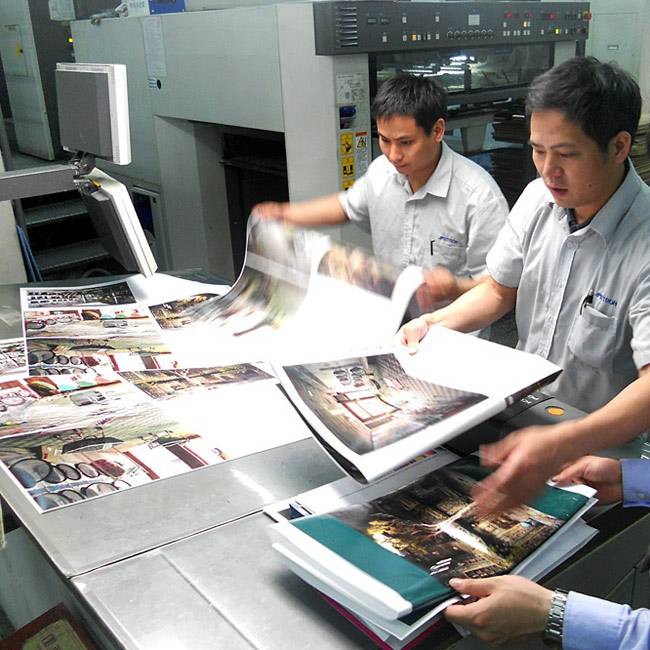The New Heroes & Pioneers
A different kind of publishing company starts from scratch to produce art and coffee books with a twist

Art books should have a certain allure, one that makes you want to open its cover and discover the story within. Many of the major book publishers, however, have found themselves in a rut. The same big name artists—both deceased and living—make regular appearances over and over again in the seasonal catalogs. These sort of titles, more often than not, end up collecting dust as decorative objects, rather than serving as a source of knowledge and inspiration.

The New Heroes & Pioneers (TNHP) is a Malmö-based art book publisher that takes a much different approach, working with younger and lesser-known talents, but also offering more than just books. Jokingly calling themselves “Scandinavian Book Publishers and Curators of Extraordinary Culture,” the TNHP team’s first volume, “Hide in Plain Sight“, by photographer Jens Lennartsson is filled with photos he took around the world along with 100 inspirational tips to improve your own travel photography. We spoke to TNHP founder, François LeBled, to learn how a Frenchman ended up in Sweden to start a print publishing company in the age of Kindles and iPads.
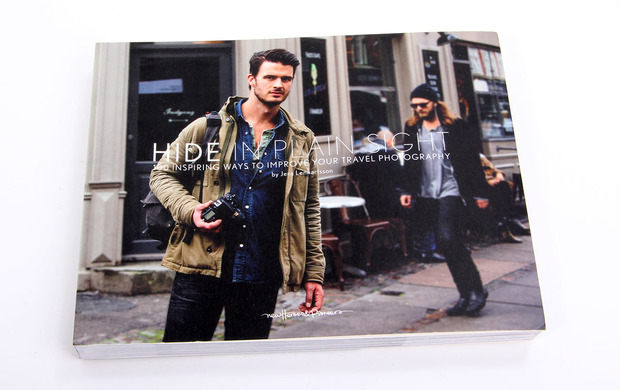
How many books are you planning to publish in your first year?
We are planning to publish eight books that we will self-develop—so not commissioned books—up to potentially 12. In addition to that, we have a collection that we are developing books for companies. Those books are not necessarily part of the catalog.
Companies want their own books?
We try to develop books with some twists when it comes to culture. But we believe that corporate culture is actually [another] culture that’s very interesting. The way it evolves, whether they are very old companies or much younger ones—take H&M, for example, the Swedish company. It’s more than 100 years old.
What? Seriously?
Yeah, but no one knows! That’s what I mean by corporate culture—the story of some companies can be fascinating and can be part of a book.
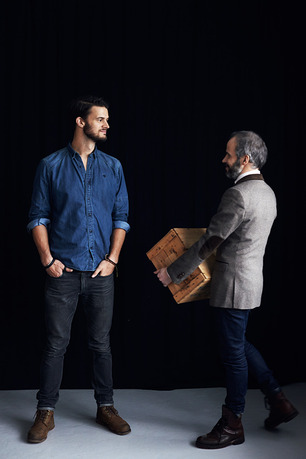
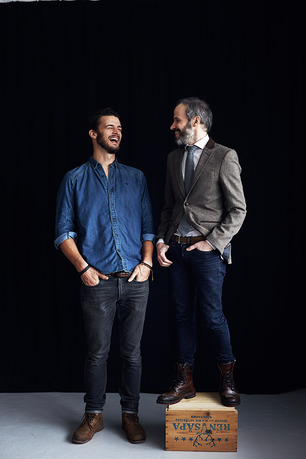
Definitely. Cool Hunting needs its own book, too.
Everyone has a good story to tell. It’s all about how to tell that story, to whom and is it a good moment to tell that story.
Everyone has a good story to tell. It’s all about how to tell that story, to whom and is it a good moment to tell that story. Some companies that have approached us are very young, so we tell them, “Come back; we’ll approach you again in two or three years, when you have a little bit more to say.” So it’s about timing as well, and to who they want to tell that story—some companies, they want to tell a story, but they don’t want to put the book on the market. They just want to give it to their employees and partners.
A company has as many stories as they have employees, or as they have number of years of existence, or as they have partners or customers. So, if a company wants to talk about customer stories, we make that into a beautiful book that will strengthen their relationship with their customers. Or if it’s a company celebrating 100 years and they want to celebrate the people that made the company, it’s going back to their history. What was it like 100 years ago; what were the condition of living and working and what are the conditions today? There is one furniture company that we are doing a workshop with and they want to make a book about how they’ve been contributing to a greener environment. Not being a green company, necessarily, but they’ve been doing a lot of things to become greener. For them, they think it’s much better to tell that from a book point-of-view than from an advertising point-of-view.
Advertisements and news articles are much more transient, ephemeral, when compared to books.
Exactly. The biggest argument we make, when we approach companies to make a book, is legacy. What is the way we are leaving a trace these days? We record a message and we hope we come back to it, but books! Libraries are the best place for being seen, for leaving a trace. Books are still the best medium for it, and we try to do that with beautiful books and beautiful pictures, working with amazing photographers.To mix “known” and “remembered” into one medium, a book is still the best.

Let’s talk about your own story—so how does a Frenchman end up in Sweden?
Love took me to Sweden about ten years ago. I got married, then I got divorced—but I fell in love with the country. I’m a real Parisian but I also consider myself very Swedish. I’m actually trying to get nationality to become Swedish as well, that’s how much I like the country. (I would be a small, not-blonde Swedish guy if I ever get the nationality, which is quite fun.)
I needed a new start and moved to Amsterdam; I really missed Sweden, way more than I was missing Paris. Then I lost my job in Amsterdam and I was struggling finding a new one. Being the real Frenchman that I am, I kept on complaining to everyone about the hardship of finding a job. One of my best friends at some point said to me, “Stop complaining all the time. You’re clever. Find what you want to do, and make it yourself.” I came back home one evening and started to write a business plan—and two months later, I moved back to Sweden. That was one year ago.

And you then started a publishing company from scratch.
TNHP is a very traditional book publishing company, but we want to put a lot of twists to it. We wanted to make sure we would be publishing a lot of free stuff—we have grants for photographers and we’re developing a cultural platform that we’re going to launch in March. It’s very much culture-focused, but alternative culture-focused, and it’s free.
We have another collection called the “Good Cause” that works only with charities. We develop books for free for charities and we work with contributors who are willing to work for free. All the proceeds from the book go to that charity. We have the first charity picked, Eye Am, which is a new organization that will go to Ethiopia, Kenya and Ukraine and teach young kids the art of photography. We’re going to publish a book of the photos [taken] by the kids, too.
So Eye Am gives the children an opportunity to capture their view of the world, rather than an outsider’s view. To publish a book to support charities is a pretty creative way to give back.
We’re all between 30-40, the people working in the company, and are in different milestones in our lives. It’s really good to work and to make a salary, but it’s also time to give back. We have four pillars in the company—four things we like to say about us—and giving back is one of them.
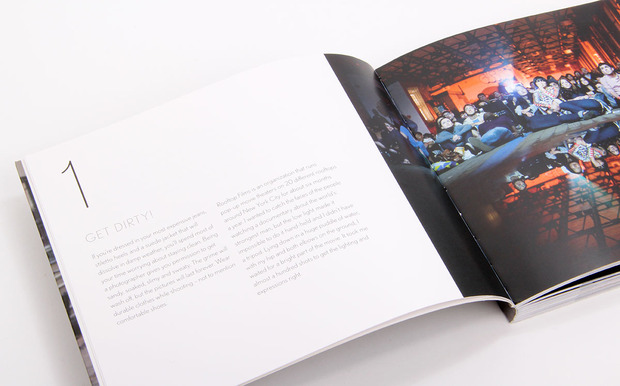
So what are the other three?
Publishing beautiful books is the first. The second one is finding new talent, because these days, we feel—when we look around—we’re always talking about the famous, when the non-famous can be very talented as well. And the third is to never compromise the artist. A lot of us have been working at different publishers, and these publishers who want to sell more [books] asked some of the artists to compromise on something. For example, to remove nudity or to color black and white pictures. So if we find someone we like, we are committed to not compromise their artistic view. If we like the artist’s work and find that it is not offensive to anyone (which is our only criteria), then we have no reason to censor it for the sake of business and selling more.
None of the people we are publishing are famous—we hope they will be famous! We consider ourselves to be a helper, to help someone become famous and be published. In all of the books, none of them have ever been published before. For us, finding new talent is actually something very important. One of the collections is called “The Next Generation,” and that’s where the grant is. [To be eligible] you should not have been published by anyone or have had an exhibition; we’re only taking newcomers.
We have a book coming out in December called “The Social Network Book” (the title is not final yet, for now we are calling it “The Sharable Book”) and the idea is that people will not be able to buy it alone. They will have to buy it with four friends—so five people will need to buy that book [at a time]. Books can be a bit expensive, so we’d rather make it cheaper for everyone, so it’s sharable in the way to buy it but it’s also sharable because all the pages in the book are posters of artwork from totally unknown artists. And then what we’re doing, we’re asking the people who buy the book to rip the pages, frame them and offer them to others. And if they put it on their social network, we are going to send them back a book. It’s about sharing new talent. And that’s what I mean by trying to publish about culture with a twist, either in the content or the way to put it together. But at the end, what’s important is publishing beautiful books.
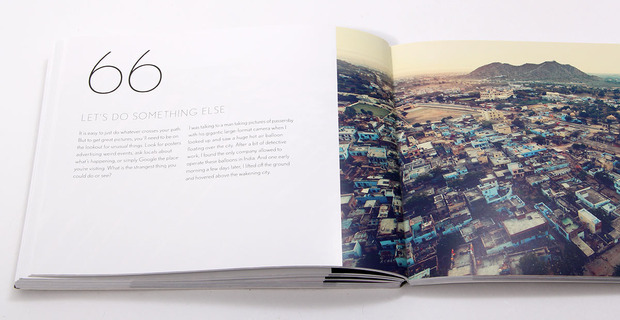
That’s what I really enjoyed about “Hide in Plain Sight.” It’s a beautiful photography book, but it’s very useful. It’s not just meant to sit on the coffee table and look pretty—you need to read it to learn the tips.
Exactly. And when we published that book, what was really important for us was that all of the tips that were given did not need for anyone to buy a new lens or camera. None of the tips are technical, and all of them can be done with the material you already have. The photographer wanted to give inspirational tips that everyone could use immediately and not have to invest in tons of equipment again.
I found that a lot of the tips can even be applied to taking photos with a smartphone camera, to make them more Instagram-worthy. So has reading this book made yourself a better photographer?
[Laughs] I wish, but believe it or not, I’m still using a very old Ilford camera from my dad and my grandfather. Real film, I’m an old style guy—that’s why I publish books and not e-books. [Laughs] My friend always teases me and says that, if I could, I would still be having my mail delivered by pigeons or horse.
Does TNHP experiment outside of the book’s content, such as playing with different types of materials or binding?
The next book, “Mindful Encounters,” is a beautiful book of travel photography of about 10 chapters. What we’re doing to elevate the experience of reading the book is that the paper used in the different chapters will also be different. When you turn the page and it’s about a woman the photographer met, the paper is very silky and soft. And when it’s about the landscape taken at the beach, in a chapter called “Horizons,” then the paper is way more grainy. So we tried to add some experience to the feeling of turning the page.
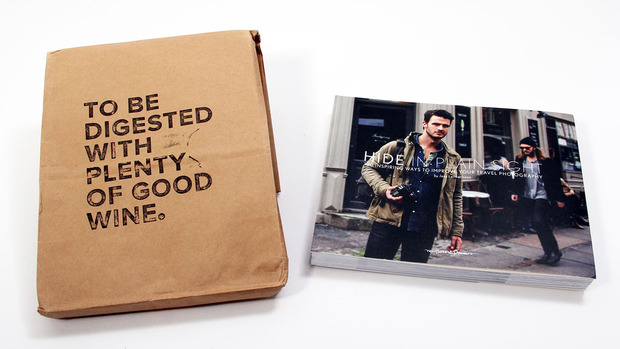
TNHP has got every single detail covered. The packaging that covered my copy of “Hide in Plain Sight” was a nice surprise—plain brown paper printed with the phrase, “To be digested with good wine.” I put it on the wall in our office.
We don’t want to provide the Amazon experience; we want to provide a unique experience and the packaging is a very important part of this. We also give postcards and little notebooks [along with the book] as well, because if people are nice enough to trust us with our culture and books, we want to reward them with more than what they expect. For example, with every book that people buy, we’re adding a little something to show our gratitude. For the book “Mindful Encounters,” we are going to add a big poster for people to use, because the pictures are absolutely beautiful. For “The Sharable Book,” we’re adding coffee—we’re having our own coffee made. Because 5 people will buy the book [at a time], we think it’s really nice to flip through the pages together around a cup of coffee. And the whole idea for the reporter notepad [for “Hide in Plain Sight”] was at the end, people will travel, and we hope that they will take the book, take pictures and journal in this notepad. “Hide in Plain Sight” is on Amazon, but people will receive their book in Amazon packaging. If they purchase it directly from our website, they will receive the entire packaging experience—the postcards, notepads, everything, which is not something we can do with Amazon.
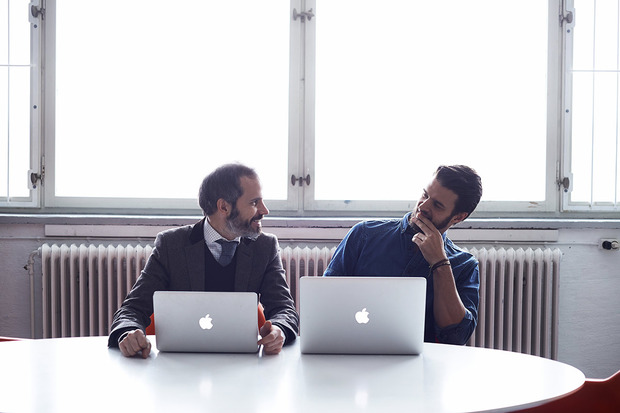
How do you consume culture on a daily basis? What’s your routine like?
The first thing I do in the morning is read the news online. I read every day; I write as well. I’m writing books that I don’t publish. My personal Bible is Monocle. I like the mix of business and culture. Actually, my business partner Jens [and the author of “Hide in Plain Sight”] has published some photography in Monocle before, so I got to see the headquarters in London. My second Bible is a French magazine called The Good Life. I don’t know if you’ve seen it, but it’s a cut-and-paste of Monocle. It’s so similar I’m surprised Monocle hasn’t been suing them. [laughs] Those are my two Bibles; after that, I devour books and a lot of [other] magazines as well.
And the other thing I love as well, which is a bit weird, is catalogs. So actually, I have piles and piles of catalogs at home, boxes even. Whether it’s clothes catalogs—GANT, H&M, Hackett, The Kooples, I have so much. The catalogs of Nn.07, a Scandinavian brand, are so beautiful they look like art books. Nn means No Nationality, and ’07 is the year they were created; every year the collection is inspired by a different country. And catalogs are free. Between books, magazines and catalogs, it’s already a lot, so that’s about the routine. Internet as well—very often, Jens and I challenge each other to find an article or a subject that does not exist on the internet. “Let’s find a topic that if we Google it, we won’t find information about it.” And that’s a little bit of how we base our cultural platform [out] in March; topics that don’t really exist, finding content that is alternative. We don’t want to be mainstream but we don’t want to be extreme either; we wan’t to be somewhere in the middle. We think there is a whole lot of culture that is alternative without being extreme.
The first book from The New Heroes and Pioneers, “Hide in Plain Sight” by Jens Lennartsson, is available from its website for $27 as well as Amazon. Visit TNHP to keep an eye out as they launch their new platforms, books and initiatives; for now, you can check out their quarterly e-magazine. If you have interest in pitching a book idea or becoming a contributor, email editor@newheroesandpioneers.com.
TNHP images courtesy of Benjamin Bergh and Meredith Andrews, book photos by Nara Shin
